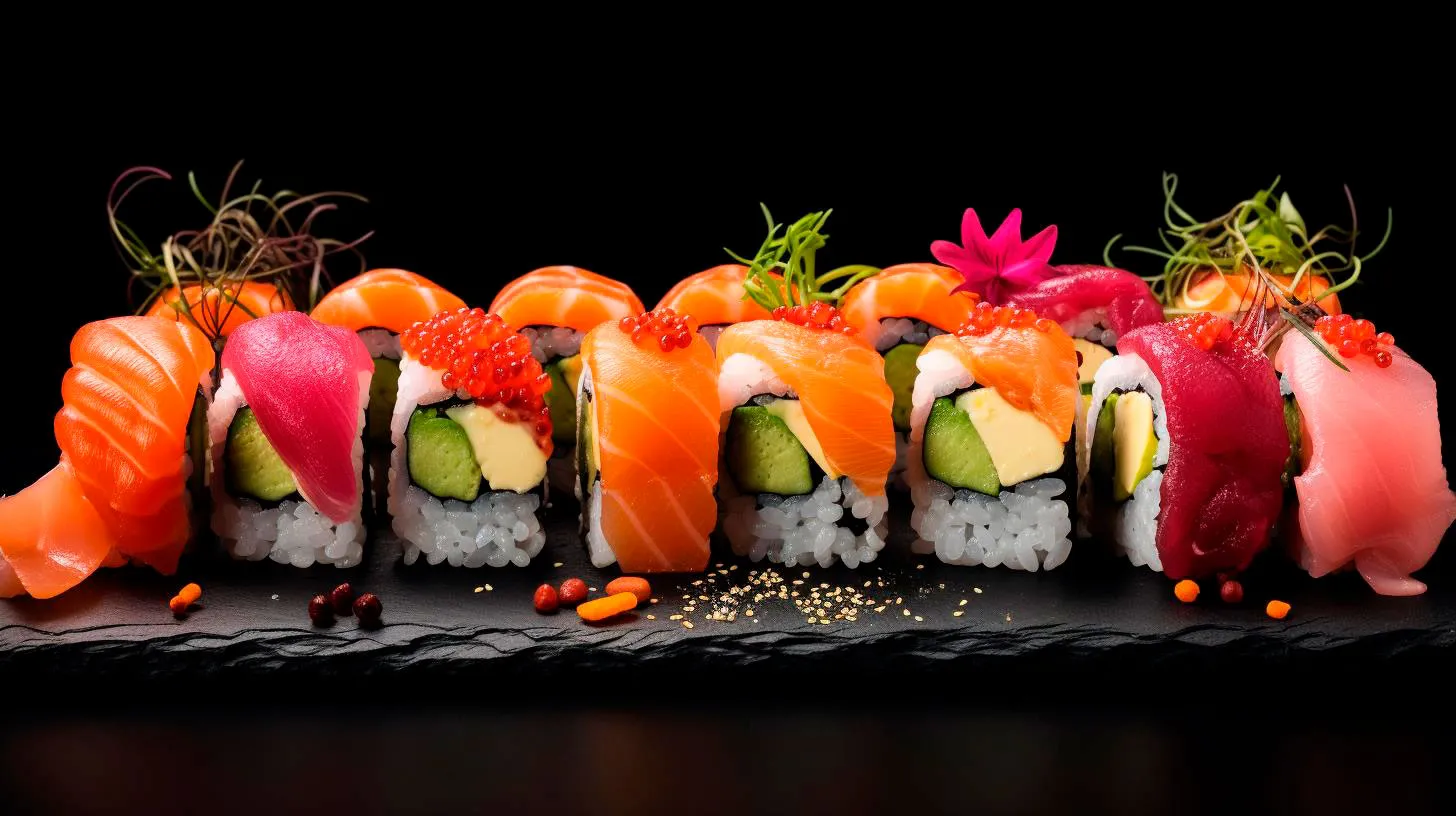The Science Behind Umami: Discovering the Secrets of the Fifth Basic Taste
However, recent research has shed light on the mysterious and captivating world of umami. In this article, we will delve into the science behind umami, its unique characteristics, and how it has revolutionized the culinary industry.
What is Umami?
Umami is a Japanese word that translates to “pleasant savory taste.” It is often described as a rich, savory, or meaty flavor that enhances the taste of food. The discovery of umami as a distinct taste was first made by Dr. Kikunae Ikeda, a Japanese chemist, in 1908. Dr. Ikeda identified a key compound called glutamate, commonly found in foods such as mushrooms, meat, tomatoes, and cheese, as the primary source of umami.
The Science behind Umami
Umami works by stimulating specific taste receptors on our tongues, known as umami receptors. These receptors are sensitive to the presence of glutamate and certain nucleotides, such as inosinate and guanylate. When these compounds interact with the taste receptors, they send signals to our brain, resulting in the perception of umami taste.
Scientists have identified a specific protein, called the taste receptor type 1 member 1 (T1R1)/taste receptor type 1 member 3 (T1R3), as the key receptor responsible for detecting umami taste. This discovery has allowed researchers to delve deeper into understanding the physiological and molecular mechanisms behind umami perception.
The Characteristics of Umami
Unlike other tastes, umami is not easily described using conventional taste descriptors. However, there are a few characteristics that help distinguish umami from the other four tastes:
- Rich and savory
- Enhances food flavors
- Long-lasting taste
- Synergistic effect with other tastes
This unique combination of characteristics makes umami an essential element in creating complex and satisfying flavor profiles in various cuisines around the world.
Umami and the Culinary Industry
The discovery of umami has had a substantial impact on the culinary world. Chefs and food manufacturers now have a better understanding of how to enhance flavors in their dishes by incorporating umami-rich ingredients. Here’s why umami is a game-changer:
Enhanced Flavor
Umami can elevate the taste of food by adding depth and complexity. By incorporating umami-rich ingredients, such as soy sauce, mushrooms, or Parmesan cheese, chefs can create mouthwatering dishes that leave a lasting impression on the palate.
Reduced Sodium Intake
Umami has the remarkable ability to enhance taste perception, allowing chefs to reduce the overall sodium content in their recipes without compromising flavor. This is especially crucial given the increasing concerns about excessive salt intake and its impact on health.
Umami in the Health World
Apart from its flavor-enhancing properties, umami has been found to have potential health benefits. Glutamate, the primary compound responsible for umami taste, is an essential amino acid that plays a vital role in various physiological functions in the human body.
Research suggests that glutamate may help improve digestion, stimulate saliva production, and enhance the overall palatability of food, especially for individuals with certain medical conditions that affect taste perception, such as cancer or aging-related taste disorders.
Key Takeaways
- Umami is a distinct taste, often described as savory and meaty.
- Glutamate, along with certain nucleotides, stimulates umami receptors on our tongue.
- Umami enhances flavors, complements other tastes, and creates a profound culinary experience.
- It allows for the reduction of sodium content in recipes without sacrificing taste.
- Umami may have potential health benefits.
In conclusion, the science behind umami has unraveled the secrets of this intriguing fifth basic taste. Understanding umami has revolutionized the culinary world, enabling chefs to create extraordinary flavor combinations and providing health benefits to those with taste-related disorders. So, the next time you savor a delicious mushroom risotto or indulge in a piece of aged Parmesan cheese, you can appreciate the complex and captivating world of umami.
From Tradition to Innovation: How Sushi Chefs Master the Art of Umami
Join us as we delve into the world of sushi and explore how sushi chefs have seamlessly blended tradition with innovation to create tantalizing flavor profiles.
The Secrets of Umami
Umami is a Japanese term that translates to “pleasant savory taste.” It is often described as a mouthwatering sensation that adds depth and complexity to dishes. Discovered by Japanese scientist Kikunae Ikeda in the early 20th century, umami is now recognized as one of the fundamental tastes alongside sweet, sour, salty, and bitter.
So, how do sushi chefs harness the power of umami? Here are some key techniques:
- Selection of Ingredients: Sushi chefs understand that the quality and freshness of ingredients is crucial in enhancing umami. From the delicate flavors of sashimi-grade fish to the earthy undertones of mushrooms, every ingredient is chosen with precision.
- Use of Seasonings: Traditional sushi is often seasoned with soy sauce, wasabi, and pickled ginger. These ingredients not only complement the flavors but also amplify the umami taste.
- Mastering the Rice: The sushi rice, or shari, plays a pivotal role in achieving umami. Chefs meticulously season the rice with a blend of vinegar, sugar, and salt to create a perfect balance of flavors.
- Fermentation and Aging: Sushi chefs employ ancient techniques like fermentation and aging to develop umami-rich flavors. Fermented soy-based condiments like miso and soy sauce add depth, while aging fish like tuna enhances its natural umami.
Sustainability and Innovation
As the world embraces sustainability, sushi chefs have also found innovative ways to incorporate eco-friendly practices into their craft. Here are some notable developments:
- Responsible Fishing: Sushi chefs are increasingly sourcing their ingredients from sustainable fisheries. By adhering to strict guidelines and supporting responsible fishing practices, they ensure the long-term availability of their ingredients.
- Plant-based Sushi: In response to the growing demand for plant-based options, sushi chefs have started exploring innovative techniques to create vegan and vegetarian sushi. From using tofu as a substitute for fish to experimenting with vibrant vegetable combinations, plant-based sushi offers a delightful alternative.
- Technology in Sushi Making: Sushi chefs are embracing technology to enhance their culinary skills. From automated rice cookers to precision-cutting machines, innovative gadgets streamline the sushi-making process, allowing chefs to focus on creativity and flavor.
The Future of Sushi
While sushi has undoubtedly found a place on menus worldwide, the future holds even more exciting opportunities. Here are some key takeaways on the future of sushi:
- Fusion Flavors: Sushi chefs are increasingly experimenting with fusion flavors, incorporating elements from different cuisines. This trend promises an explosion of unique taste combinations and exciting culinary experiences.
- Artistic Presentation: Sushi has always been known for its visual appeal. In the future, we can expect sushi chefs to push the boundaries of artistic presentation, turning each dish into a masterpiece.
- Nutritional Innovation: As health-conscious consumers seek out nutritious options, sushi chefs are likely to explore innovative ways to boost the nutritional value of their creations. We can anticipate an emphasis on superfood rolls, nutrient-rich ingredients, and creative healthy alternatives.
In conclusion, the evolution of sushi from a traditional Japanese delicacy to a global phenomenon is a testament to the culinary ingenuity of sushi chefs. By mastering the art of umami, they create flavor profiles that tantalize our taste buds. Through sustainable practices and innovative techniques, sushi continues to captivate and inspire. As we embark on the exciting journey into the future of sushi, we can expect even more delectable surprises along the way.
Unleashing Umami: Unlocking the Hidden Depths of Taste in Sushi Cuisine
Umami, often referred to as the fifth taste, is a savory sensation that adds depth and richness to a dish. Discovered by Japanese scientist Kikunae Ikeda in 1908, umami has since been recognized as one of the fundamental flavors that our taste buds can perceive. In sushi cuisine, umami plays a crucial role in creating a truly unforgettable culinary experience.
The Secrets of Umami in Sushi
Umami is primarily derived from glutamate, an amino acid found naturally in many foods. In sushi, several ingredients contribute to the creation of umami, enhancing its taste profile:
- Fish: Fresh and high-quality fish, such as tuna and salmon, are rich in umami. Their natural oils and proteins contribute to the savory flavor.
- Soy Sauce: When dipping your sushi into soy sauce, you are adding a burst of umami to your palate. Fermented soybeans provide the distinctive flavor that enhances the taste of sushi.
- Nori: The crisp seaweed wrapping around sushi rolls is not only visually appealing but also rich in umami. It contains a unique combination of minerals that amplifies the flavors of other ingredients.
- Mirin and Vinegar: These traditional sushi seasonings, often used to prepare sushi rice, provide a tangy yet savory taste that intensifies the umami experience.
The Advantages of Embracing Umami
By incorporating umami-rich ingredients into sushi cuisine, chefs can achieve a flavor explosion that keeps diners coming back for more. Here are the key advantages of embracing umami:
- Enhanced Flavor: Umami adds depth and complexity to sushi, transforming it from a simple dish into a multisensory experience.
- Culinary Innovation: Exploring umami opens up a world of possibilities for sushi chefs to experiment with different ingredients and combinations, creating unique and exciting flavor profiles.
- Health Benefits: Umami-rich foods are often packed with essential nutrients. Sushi lovers can enjoy their favorite dish while reaping the benefits of a balanced diet.
- Customer Satisfaction: Offering sushi dishes bursting with umami ensures diners leave the restaurant feeling satisfied and eager to return for more.
Unleash the Umami Magic
Wondering how you can unlock the hidden depths of umami in your sushi experience? Here are some key takeaways to keep in mind:
1. Seek Quality Ingredients
Freshness is key when it comes to umami. Choose the highest quality fish and seafood available to ensure intense flavors in every bite.
2. Experiment with Umami-Boosting Ingredients
Try incorporating umami-rich ingredients into your sushi creations. Experiment with seaweed, mushrooms, and sauces like ponzu or eel sauce to enhance the umami profile.
3. Balance is Key
While umami is a powerful taste, it is important to achieve a balance among all the flavors in your sushi. Aim for harmony by combining umami with sweetness, acidity, and bitterness.
4. Educate Your Diners
Share the secrets of umami with your customers. Providing information about the flavors and ingredients in your sushi can enhance their dining experience.
In conclusion, unlocking the hidden depths of taste in sushi cuisine is all about embracing the magic of umami. By incorporating umami-rich ingredients and understanding how to balance flavors, sushi chefs can create extraordinary culinary experiences. So, let’s embark on this journey and reveal the full potential of umami in every delectable bite of sushi.
The Umami Revolution: Exploring the Culinary Mastery of Sushi Chefs
Sushi is more than just raw fish and rice. It is a testament to the principles of umami, the Japanese term for the fifth taste. Umami is often described as a savory, meaty, or brothy flavor that enhances the overall taste experience. Sushi chefs possess an innate understanding of umami and use it as a foundational element in their craft to create the perfect balance of flavors.
The Artistry of Sushi Preparation
Creating sushi is an art form that requires years of training, precision, and dedication. Sushi chefs, also known as itamae, meticulously select the finest ingredients and transform them into culinary masterpieces. Here are some key aspects of their artistry:
- Knife Skills: Sushi chefs undergo rigorous training to hone their knife skills. They expertly slice fish, ensuring precise cuts that enhance the texture and mouthfeel of the sushi.
- Presentation: Sushi is not just about taste; it is a visual feast as well. Chefs carefully arrange each ingredient, creating stunning visual compositions that elevate the dining experience.
- Rice Perfection: The sushi rice, known as shari, is a crucial element in sushi preparation. Chefs meticulously cook and season the rice to achieve the perfect texture and flavor that complements the various toppings.
The Umami Factor
Umami plays a pivotal role in sushi, taking it from ordinary to extraordinary. Sushi chefs incorporate umami-rich ingredients to enhance the flavors and create a unique taste experience. Here are some umami-rich ingredients commonly found in sushi:
- Nori: The seaweed wrap that holds sushi together is not only a source of umami but also adds a subtle briny flavor.
- Soy Sauce: Sushi chefs use soy sauce sparingly to enhance the overall umami profile of the dish. The salty soy sauce perfectly complements the delicate flavors of sushi.
- Miso: Miso paste, made from fermented soybeans, is often incorporated into sushi preparations. Its umami-rich profile adds depth to the dish.
- Seafood: From fatty tuna to succulent shrimp, sushi chefs meticulously select seafood options that bring out the best umami flavors.
Sushi chefs not only focus on individual umami-rich ingredients but also strive to create a balance of flavors within each sushi roll or nigiri. The combination of ingredients is carefully chosen to ensure a symphony of tastes that leave a lasting impression on the palate.
Key Takeaways to Remember
- Umami Mastery: Sushi chefs excel in the art of creating umami-rich dishes that showcase the fifth taste.
- Precision and Artistry: The meticulous preparation and presentation of sushi are a testament to the craftsmanship of sushi chefs.
- Balance of Flavors: Sushi is a delicate balance of flavors, textures, and visual appeal, ensuring a memorable dining experience.
In the realm of culinary mastery, sushi chefs stand at the forefront, creating a revolution of umami-infused dishes. Their dedication to perfection and pursuit of harmony between taste and presentation have elevated sushi to new heights. So, the next time you indulge in a sushi feast, take a moment to appreciate the artistry and expertise behind each bite.


